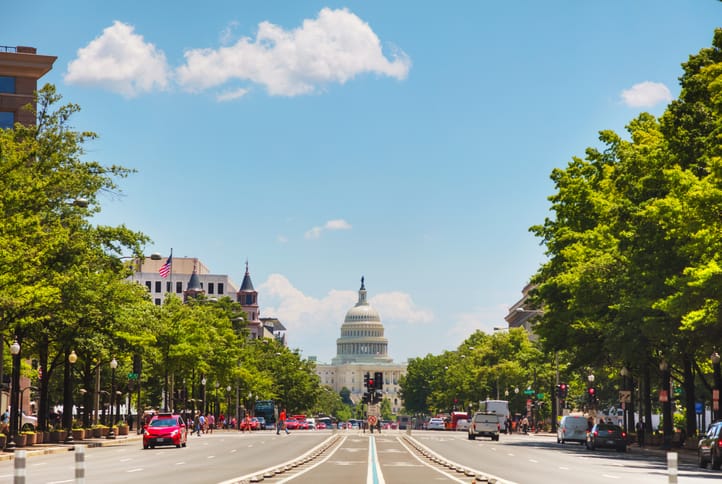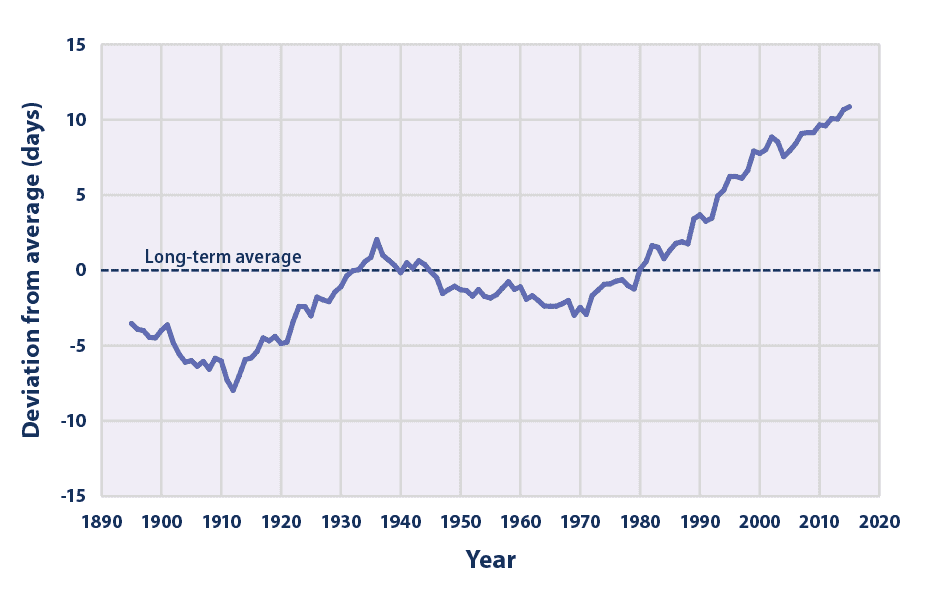New York Times’ Shoddy Reporting on Agency Skeptic

 On Monday, March 2, The New York Times ran an article titled “A Trump Insider Embeds Climate Denial in Scientific Research.” The fact-checkers and editors dropped the ball on this one, beginning with the title.
On Monday, March 2, The New York Times ran an article titled “A Trump Insider Embeds Climate Denial in Scientific Research.” The fact-checkers and editors dropped the ball on this one, beginning with the title.
The alleged embedder, environmental economist Indur Goklany, is not a “Trump insider.” Dr. Goklany—“Goks” to his friends—has been an Interior Department economic and environmental researcher since the 1980s. It is doubtful anyone working at 1600 Pennsylvania Avenue ever heard of him before the Times published its hit piece.
The reporter, Hiroko Tabuchi, never defines “climate denial.” One click of the mouse would have taken her to Dr. Goklany’s website, which lists, among his credentials, “Involved with the Intergovernmental Panel on Climate Change since before its inception—as an author, U.S. delegate and reviewer.” According to Wikipedia (h/t Kip Hansen), “[Goklany] has represented the United States at the Intergovernmental Panel on Climate Change (IPCC) and during the negotiations that led to the United Nations Framework Convention on Climate Change. He was a rapporteur for the Resource Use and Management Subgroup of Working Group III of the IPCC First Assessment Report in 1990.”
As visitors to Goklany’s website can also confirm for themselves, none of his peer-reviewed journal articles or think tank reports denies or questions the reality of anthropogenic warming.
The Times article’s subtitle states: “At the Interior Department, an official has pressured scientists to include misleading claims about climate change in their work.” The juxtaposition of “official” and “scientists” is itself misleading. Agency scientists are also “officials,” and Goklany is a “science and technology policy analyst,” which also makes him an agency “scientist.”
The article does not say how Goklany exerted “pressure” or whether that’s just how the “force” of logic and data feels to those who don’t get their way. Goklany apparently had editorial input into “negotiated” language about the “uncertainty” of climate modeling projections. Negotiation over word choices in official documents is routine business in federal agencies. It is not newsworthy.
More importantly, the insinuation that agency “scientists” worked in a pressure-free zone until a “Trump insider” rained on their parade is loopy. All agencies impose message discipline to one degree or another on official communications. The Obama administration was quite aggressive in that regard. The Obama team continually invoked the “scientific consensus” when stumping for the so-called Clean Power Plan, the ambitious fuel economy mandates, the Paris Climate Treaty, and other big-ticket domestic and foreign policy initiatives. Unsurprisingly, dissent on climate change was not tolerated.
The Times article begins:
An official at the Interior Department embarked on a campaign that has inserted misleading language about climate change—including debunked claims that increased carbon dioxide in the atmosphere is beneficial—into the agency’s scientific reports, according to documents reviewed by The New York Times.
The term “misleading” occurs six more times in the article. As we will see, Goklany’s heresy consists in injecting a smidgeon of balance into agency climate impact assessments.
The article continues:
The misleading language appears in at least nine reports, including environmental studies and impact statements on major watersheds in the American West that could be used to justify allocating increasingly scarce water to farmers at the expense of wildlife conservation and fisheries. … The wording, known internally as the “Goks uncertainty language” based on Mr. Goklany’s nickname, inaccurately claims that there is a lack of consensus among scientists that the earth is warming. In Interior Department emails to scientists, Mr. Goklany pushed misleading interpretations of climate science, saying it “may be overestimating the rate of global warming, for whatever reason;” climate modeling has largely predicted global warming accurately. The final language states inaccurately that some studies have found the earth to be warming, while others have not.
So, according to the Times, Goklany claims “there is a lack of consensus among scientists that the earth is warming.” The Times provides no link, direct quotation, or third-party testimony to substantiate that allegation. As noted above, Goklany’s published work contains no such assertion. Moreover, the snippet quoted by the Times—climate scientists “may be overestimating the rate of warming”—presupposes that the world is warming.
The Times also provides no supporting evidence for the claim that “climate modeling has largely predicted global warming accurately.” For a compelling case that models are tuned too hot, see Ross McKitrick and John Christy’s study, “A Test of the Tropical Warming Rate in Climate Models.”
The article then claims:
He [Goklany] also instructed department scientists to add that rising carbon dioxide—the main force driving global warming—is beneficial because it “may increase plant water use efficiency” and “lengthen the agricultural growing season.” Both assertions misrepresent the scientific consensus that, overall, climate change will result in severe disruptions to global agriculture and significant reductions in crop yields.
Nonsense. Those statements would “misrepresent the scientific consensus” only if presented as an “overall” assessment. The Times provides no evidence Goklany did anything of the sort. Pointing out the positive impacts of carbon dioxide is not equivalent to denying potentially negative impacts. Requiring that positive impacts be acknowledged rather than swept under the rug is not misleading.
Far from being “debunked,” the agricultural benefits of CO2 emissions and recent warming are well-known to experts, even if seldom acknowledged in the mainstream media. The chart below is from the Obama-era EPA. Since 1970, the frost-free U.S. growing season has increased by about two weeks. That means more food at more affordable prices.

The Center for the Study of Carbon Dioxide and Global Change maintains a voluminous Plant Growth Database, updated weekly, on the biological effects of atmospheric carbon dioxide (CO2) enrichment. For example, in 366 peer-reviewed studies, rice on average experienced a 32 percent increase in dry weight (biomass) when raised with an extra 300 parts per million CO2.
What is misleading is to forbid discussion of CO2 fertilization and warming benefits in order to panic people into supporting economically-ruinous agendas like the Green New Deal.
The Times notes that in 2009, Goklany provided expert commentary in a film titled “Policy Peril: Why Global Warming Policies are More Dangerous than Global Warming Itself,” but does not tell readers what he said. I wrote, produced, and narrated that documentary, so allow me to summarize.
Dr. Goklany pointed out that, contrary to alarmist predictions, malaria infections and deaths had declined as average global temperatures increased. The past 10 years (2010-2019) are often described as the warmest decade on record. Yet, during that period too, progress continues in the battle against malaria.
In the film, Goklany also showed that official assessments of climate change impacts don’t always mean what political authorities allege. For example, the UK government’s 2006 Stern Review on the Economics of Climate Change claimed future generations would be worse off than people are today absent urgent action to reduce emissions. Goklany showed that even under the IPCC Fourth Assessment report’s warmest scenario (A1FI), the Stern Review implies that average per capita income in developing countries grows from $900 in 1990 to $61,500 in 2100—more than twice the per capita income of the United States in 2006.
Nobody takes the hot air out of climate hype like Goks. No wonder the Times and its agency allies seek to muzzle him.
Let’s look at the “Goks uncertainty language” that all the fuss is about.
Not a word of denial. Rather, we find humility about experts’ ability to predict the future and recognition of the special difficulty of modeling climate impacts at the local level. We also find balance: Warming and carbon dioxide emissions may lengthen growing seasons and increase plant water use efficiency, but warming “may also have adverse effects on snowpack and water availability.” The implication for policy makers? The Interior Department should work with stakeholders to “evaluate options that minimize potential impacts in ways suitable for all stakeholders.” Oh, the horror!
The Times reports that “Mr. Goklany’s rise was sudden and unexpected.” Well, the same might be said of the Trump presidency itself. Elections have consequences. Previously marginalized agency officials are now freer to question the climate doom narrative without fear of retaliation (at least until 2021).
The Times links to a slide show Goklany gave to colleagues in December 2018 “promoting the benefits of fossil fuels and carbon dioxide to human and environmental well-being.” A less partisan article might use “explaining” or “documenting” rather than “promoting.” In any case, the slide show provides abundant evidence that (1) without fossil fuels, humanity would be much smaller, sicker, hungrier, and shorter lived, and (2) fossil fuels save much of the rest of nature from humanity by dramatically reducing the land area required for food production. Have a look. Then ask yourself whether Goklany is a purveyor of “climate denial.”
Given the hundreds of experts in and out of government who espouse the so-called consensus, it is telling that the Times is alarmed by the presence of even one dissenting voice in one federal agency. The dogmatism of cancel culture would be funny were it not so prevalent in the mainstream media and progressive politics.